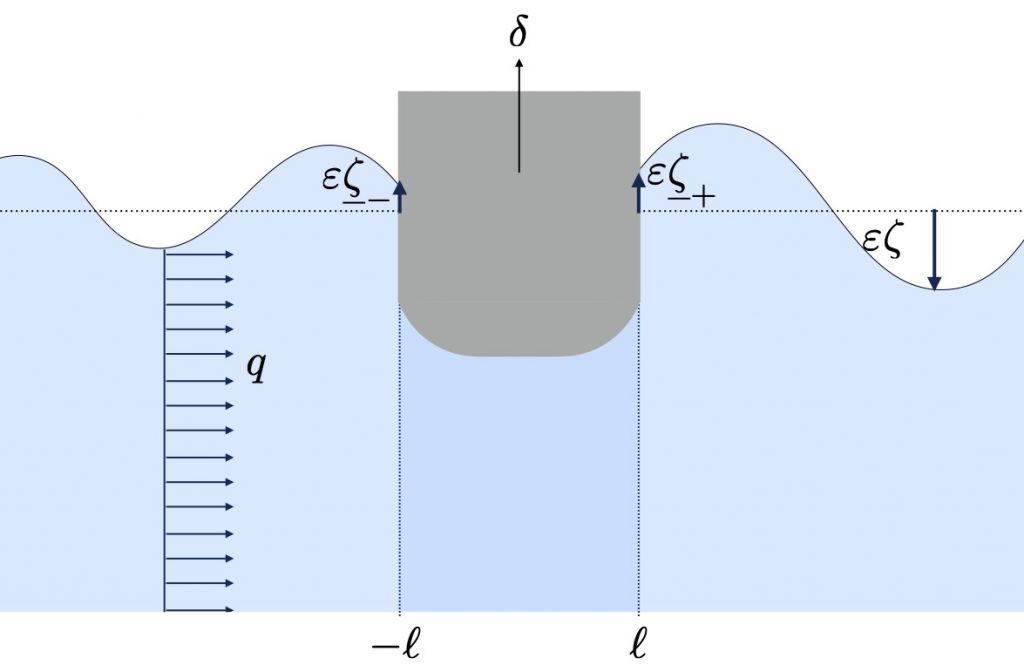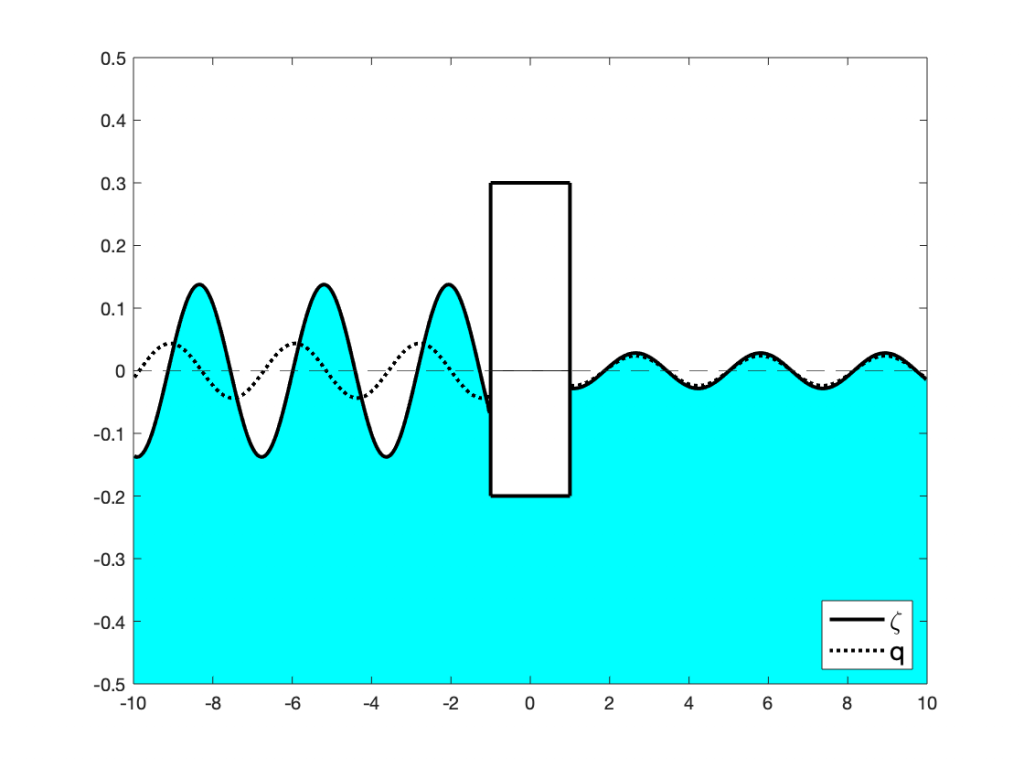Institut de mathématiques de Bordeaux, salle 2, November 25, 26, 27.
Organisation : L. Debreu, A. Debussche, E. Memin, P. Noble, D. Lannes
Registration anc contact (registration is free but necessary for logistical reasons)
This conference is devoted to one of the axis of the project Climath, within the PEPR MathVives. It gathers several comminuties working on Coastal flows, extreme waves and statistical modeling of waves, and wave-structure interaction. Its goal is to draw a precise state of the art on these topics and identify relevant perspectivs. Each day is devoted to a different topic and will be concluded by a round table.
November 25th : Ocean dynamics and waves : modeling, numerical and mathematical issues
In the morning, four numerical codes will be presented, with a special focus on the points where the expertise of the audience could yield improvements.
- 9h00-9h35: Patrick Marchesiello (LEGOS) : 3D wave-resolving CROCO
- 9h40-10h15: Rémi Baraille and Fred Couderc (Shom/IMT) : presentation of Tolosa
- Pause
- 10h45-11h20: A. Filippini (BRGM) M. Kazolea (INRIA SO) : presentation of Uhaina
- 11h25-12h00: V. Roeber (UPPA): presentation of Bosz (UPPA)
In the afternoon, short talk will focus on several perspectives, and a debrifing round table will be organised:
- 13h30-14h05: X. Bertin (La Rochelle) : La diminution des ondes infragravitaire à travers les zones de déferlement kilométriques
- 14h10-14h45: E. Audusse (Paris 13) : Coupling strategy between a fluid model and a sediment transport model : the example of the Saint-Venant / Exner system
- 14h50-15h25: K. Martins (La Rochelle) : Dispersive properties of nearshore waves, why should we bother about it?
- Pause
- 15Hh45-16h45: debriefing
November 26th: Random and statistical aspects in fluid mechanics
During the morning session, surveys will be presented on different topics.
- 9h00-9h45: A. Debussche (ENS Rennes) : introduction on the mathematical aspects
- 9h50-10h35: E. Memin (INRIA Rennes) : introduction to stochastical modeling
- Pause
- 11h-11h45: M. Benoit (Laboratoire St-Venant) : statistical transformation of waves
In the afternoon, short talks will address more specific issues
- 13h30-14h05: O. Street : Variational modelling of stochastic fluids and waves
- 14h10-14h45: A. Moneyron : Stochastic interpretations of the Water Waves equations and their approximations.
- 14h50-15h15: Guillaume Coulaud : Simulation of nearshore wave propagation and overtopping of coastal structures with a 2HD enhanced Serre-Green-Naghdi model
- Pause
- 15h30-16h30: Debriefing
November 27th : Wave-structure interactions
Surveys on different approaches will be presented in the morning session:
- 9h00-9h35: L. Debreu (INRIA Grenoble Rhône Alpes) : penalization method
- 9h40-10h15: D. Lannes (IMB) : Potential and congestion approaches for floating structures
- Pause
- 10h45-11h20: M. Bergmann (IMB and INRIA SO) : CFD approach to wave-structure interactions
- 11h25-12h10: S. Abadie (UPPA) : Wave impact
In the afternoon, small talks and a round table on these issues:
- 13:30- 13:55 : M. Paulsen (IMB) : On the Cummins equations for floating structures
- 14h00-14h25 : M. Parisot (Inria SO) : The GroundWater Waves problem in the Dupuit-Forchheimer regime
- 14h30-15h05: Mathias Delpey (Rivages ProTech): Wave overtopping and impact at urban waterfronts
- Pause
- 15h30-16h30: Synthèse









